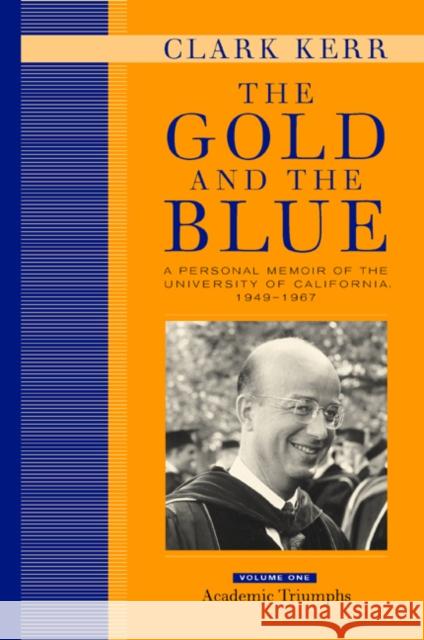The Gold and the Blue, Volume One: A Personal Memoir of the University of California, 1949-1967, Academic Triumphs » książka
The Gold and the Blue, Volume One: A Personal Memoir of the University of California, 1949-1967, Academic Triumphs
ISBN-13: 9780520223677 / Angielski / Twarda / 2001 / 608 str.
The Gold and the Blue, Volume One: A Personal Memoir of the University of California, 1949-1967, Academic Triumphs
ISBN-13: 9780520223677 / Angielski / Twarda / 2001 / 608 str.
(netto: 220,03 VAT: 5%)
Najniższa cena z 30 dni: 229,18
ok. 16-18 dni roboczych.
Darmowa dostawa!
One of the last century's most influential figures in higher education, Clark Kerr was a leading visionary, architect, leader, and fighter for the University of California. Chancellor of the Berkeley campus from 1952 to 1958 and president of the university from 1958 to 1967, Kerr saw the university through its golden years--a time of both great advancement and great conflict. This absorbing memoir is an intriguing insider's account of how the University of California rose to the peak of scientific and scholarly stature and how, under Kerr's unique leadership, the university evolved into the institution it is today.
In this first of two volumes, Kerr describes the private life of the university from his first visit to Berkeley as a graduate student at Stanford in 1932 to his dismissal under Governor Ronald Reagan in 1967. Early in his tenure as a professor, the Loyalty Oath issue erupted, and the university, particularly the Berkeley campus, underwent its most difficult upheaval until the onset of the Free Speech Movement in 1964. Kerr discusses many pivotal developments, including the impact of the GI Bill and the evolution of the much-emulated 1960 California Master Plan for Higher Education. He also discusses the movement for universal access to education and describes the establishment and growth of each of the nine campuses and the forces and visions that shaped their distinctive identities.
Kerr's perspective of more than fifty years puts him in a unique position to assess which of the academic, structural, and student life innovations of the 1950s and 1960s have proven successful and to consider what lessons about higher education we might learn from that period. The second volume of the memoir will treat the public life of the university and the political context that conditioned its environment.











